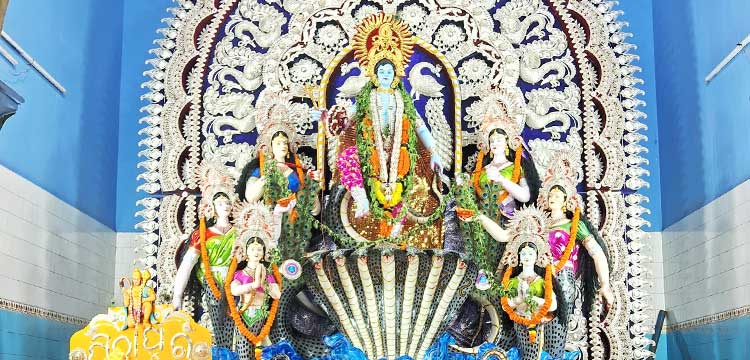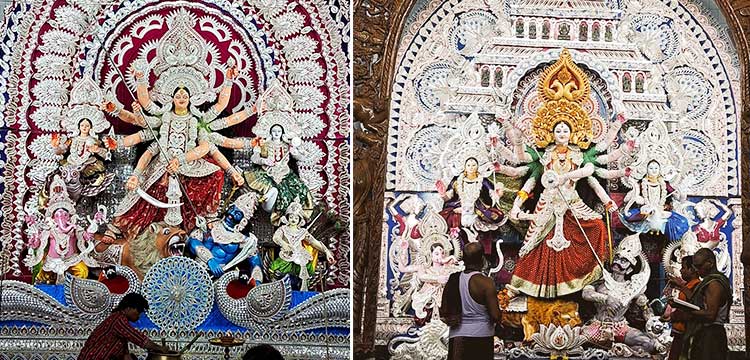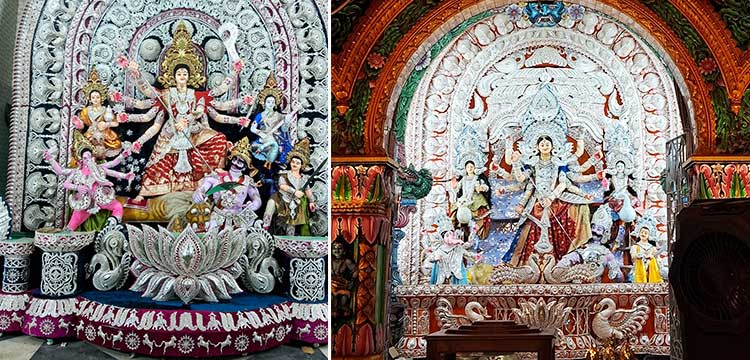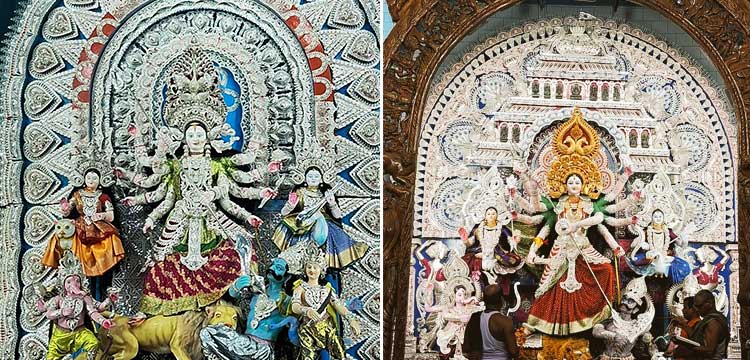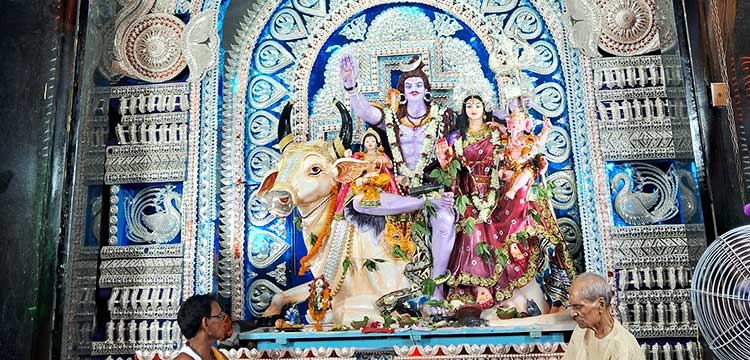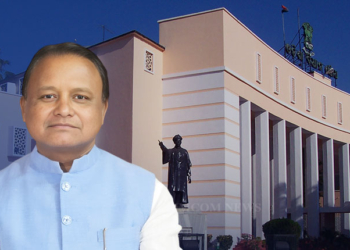Cuttack: As the autumn breeze sweeps across Odisha, the historic city of Cuttack once again dons its festive finery for Sharadiya Durga Puja. From the Baun Bazaar Tepan Gali—its famed 52 bazaars and 53 lanes—to the banks of the Mahanadi, the city pulses with devotion, artistry, and centuries-old tradition.
This year, 176 puja pandals are bringing Maa Durga to life across the city, with 36 adorned in magnificent chandi medha (silver tableaus )—a dazzling display that has earned Cuttack the title of Odisha’s Silver City of Festivities.
The puja pandals of Choudhury Bazaar, Sheikh Bazaar, Alisha Bazaar, Balu Bazaar, Chauliaganj, Chandini Chowk, Shankarapur-Badamabadi (Mahadev), Kajibazaar, Tulasipur (Mahadev), Budhi Thakurani, Ganesh Ghat (Mahadev), Bakhara Bazaar (Chhinnamasta), Firingi Bazaar, Nayasarak (Mahadev), Kathagadasahi, Pithapur (Kaliyadalan), Dargha Bazaar, Machhua Bazaar, Mangalabag, Ranihat, Chhatra Bazaar, Khannagar, Shikharpur, Haripur-Dolamundai, Bidanasi Kumbharsahi, Gangamandir, College Square, Khatbin Sahi, Kaflabazaar, Mahammadiabazaar, Nimsahi (Mahadev), Nimchoudi (Haraparvati), Tulasipur Mathasahi, Ramgarh-Kanikachhak, Jobra, and Gopaljew Mathasahi adorn chandi medhas.
Brass medhas at Telengabazaar and Bayalish Mauza and a shimmering glass tableau at Rausapatna add variety, while many pandals, led by Mangalabag and Choudhury Bazaar, are now embracing gold in their medhas.
The city’s love affair with Durga Puja is said to date back to the early 16th century–1514, when Shri Chaitanya Mahaprabhu spent time in Cuttack’s Balu Bazaar. Historical records suggest he initiated the worship of Maa Durga during autumn, laying the foundation for what became the first Sarbajanina (public) Durga Puja of Odisha.
The Binod-Bihari pandal, revered as “Bada Bhauni” (Elder Sister), proudly marks its 512th year in 2025, while Chandini Chowk’s puja is celebrated as the “Sana Bhauni” (Younger Sister).
Cuttack’s medhas have evolved with time. Initially crafted with colorful paper and sola (pith), they later incorporated zari (metallic thread) before giving way to the city’s famed Tarakasi (filigree) work in silver and gold.
The Choudhury Bazaar puja of 1956 introduced the first silver medha, and by 1999, a gold crown graced the Goddess, setting the tone for the grandeur that defines today’s festivities.
At Choudhury Bazaar alone, 2.5 quintals of silver and over 20 kilograms of gold have gone into the medha and crowns of Durga, Lakshmi, Saraswati, Ganesha, Kartik, and even Mahishasura.
“Seven decades ago, Durga Puja in Cuttack was limited to a dozen locations. Today, it’s a citywide celebration with nearly 200 pandals,” reflects Bhikari Das, General Secretary of the Cuttack Mahanagar Shanti Committee.
The formation of the Cuttack Mahanagar Shanti Committee in 1983, under the leadership of District Magistrate Pyarimohan Mohapatra, ensured that the city’s Pujas could grow in scale while maintaining harmony.
For devotees and visitors, Cuttack’s Durga Puja is more than a festival—it is a living canvas of devotion and craftsmanship, where history, culture, and community spirit converge.
As silver gleams under the festive lights and chants of “Jai Maa Durga” echo through its lanes, the city once again proves why its Durga Puja remains unmatched in grandeur and soul.




